San Cristobal de las Casas Travel Guide (With Things To Do)

Table of Contents
Located within the remote highlands of Chiapas, San Cristóbal de las Casas (or San Cristóbal for short) has become a staple for travelers heading through Southern Mexico.
From learning about its ancient tribes to trekking through breathtaking landscapes, spending time in San Cristóbal is a must.
In this San Cristóbal travel guide, we’ll cover interesting things to know about the town, as well as the best things to see and do.
Plan your trip to San Cristóbal de las Casas
Interesting Things to Know About San Cristóbal
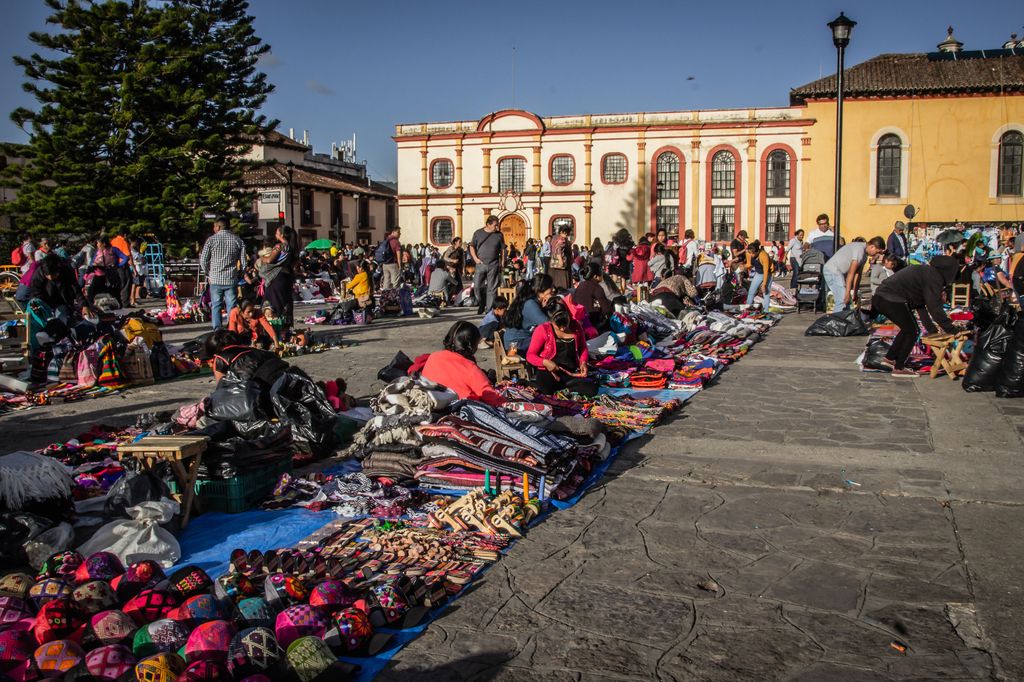
Mexico as a whole has strong indigenous roots, and the Chiapas region ranks amongst the most diverse in the country.
The first civilization to appear here was the Mokaya around 3500 years ago, who have since had new tribes directly descend from them such as the Mixe-Zoque.
These civilizations were known for their agricultural strengths, and also for developing ceramics (they created the first-known pottery in the whole of Mesoamerica).
Fast forward a few thousand years, and now we have the arrival of the Maya people, who flourished in Southern Mexico from 250-900 A.D. Inside Chiapas, they developed many prominent sites such as Bonampak, Palenque, and Toniná (all of these ruins are open for visits).
From the Maya, there were many large sub-groups emerged such as the Tzeltal and Tzotzil, and even today many still thrive such as the Lacandon.
While most are hidden away within the surrounding mountains and jungles, some live within San Cristóbal and you can even visit specialized museums such as Casa Na Bolom to learn more about their way of life.
Chiapas has always been one of the more verdant states in Mexico, with over 25% of the region covered in thick green rainforest.
Known as the Lacandon Jungle, it’s by far one of the best areas for travelers to head to who want to explore the virgin jungle. It’s an extremely biodiverse area, home to many species which range from jaguars and howler monkeys to red macaws.
As well as keeping an eye out for the local fauna, there are also many incredible waterfalls here which can easily be visited from San Cristóbal, such as those of Agua Azul.
Top 5 Things to Do in San Cristóbal
1. Visit its various Beautiful Churches
San Cristóbal is a classic example of a traditional, Mexican mountainous town, with a striking mix of indigenous roots and colonial influence. And when it comes to the latter, we can find all kinds of stunning architecture throughout the town.
Given religion has always played an important part in Mexico, we’ll always find an abundance of churches – and those in San Cristóbal are hands down some of the most beautiful.
The Iglesia de Guadalupe (map location) is the most recognizable, with its yellow and white facade which is located on top of a hill. Although there are 100 steps to climb to reach the top, it’s worth the effort for the views over San Cristóbal. It’s located just a 10-minute walk east of the main zócalo.

Another which is easier to spot is the Catedral de San Cristóbal de las Casas, which is the main cathedral in town. It’s located in the heart of the zócalo and has a beautiful interior which is worth taking your time to walk around.
One of the most underrated churches has to be the Templo y Ex-Convento Del Carmen, which has a beautiful, bright-red facade. It’s located on the Calle Hermanos Dominguez and dates back to the early 17th Century.
The churches in San Cristóbal are usually open every day, although religious events can sometimes alter schedules.
2. Enjoy Typical Chiapan Cuisine
Mexico is a true food lover’s paradise, where almost everyone is guaranteed to find at least one dish they love.
Of course, Oaxaca and Mexico City are the most popular food destinations, however the region of Chiapas packs quite the punch too.

Local corn-based dishes here such as tamales use the indigenous chipilín herb, while there are other regional specialties such as sopa de pan, chanfaina, and putzatzé.
You can head to Restaurante Taniperla to try some of these dishes (and others specifically from the Lacandon Jungle), which I recommend doing at least once on your trip here.
Chiapas is also a great place to try chocolate, with this region thought to have been one of the original birthplaces of this sweet snack.
Dating back over 4000 years ago (during the time of the Olmecs), cacao was a common snack, which they used to eat at its full, bitter strength. Chocolate was also used for spiritual purposes and even as an offering to the gods.
Those who love coffee will also be in good hands here, given Chiapas has grown to become the biggest cultivator of coffee in all of Mexico.
You can find plenty of small cafes and restaurants near the zócalo to try one of these infamous brews.
3. Learn More About San Cristóbal’s Deep History Through its Museums
Human presence within Chiapas has dated back several thousands of years (originally as hunter-gatherers), although the Mokaya was the first organized civilization to have existed here.
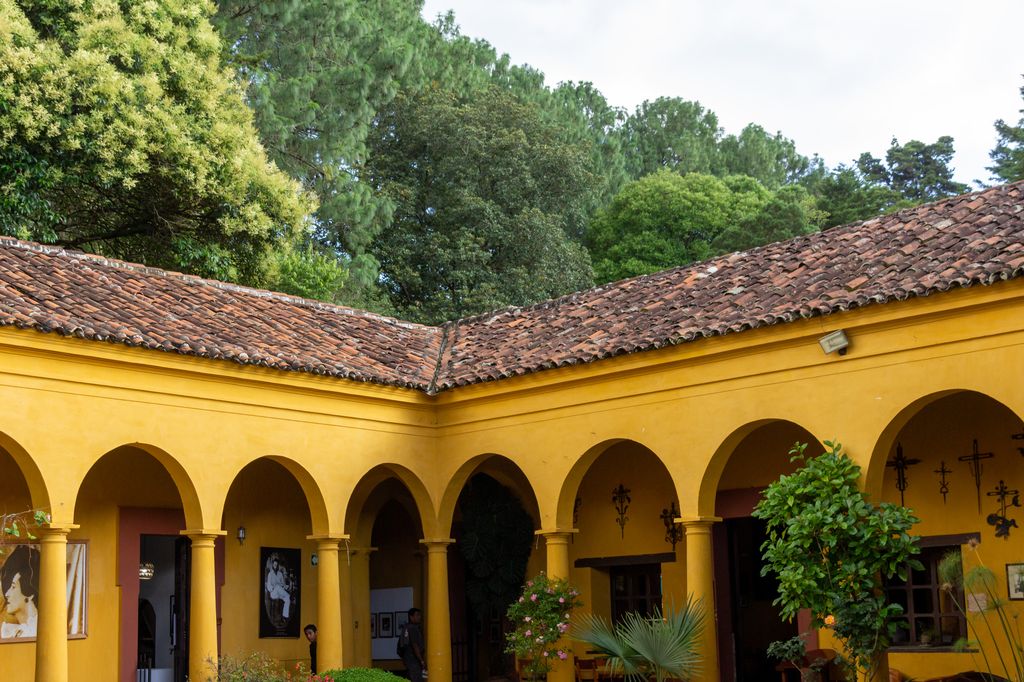
From here there have been many cultures that have ruled these lands, and there’s no better place to learn about them than by heading to Casa Na-Bolom (which is a museum as well as a hotel).
Here we can see how these ancient cultures lived, with a range of rare and interesting artifacts on display.
The museum has a keen focus on the Lacandon people, which is an indigenous group that still flourishes in the region to this day.
The Museo Mesoamericano del Jade is another worthwhile museum to visit while in San Cristóbal.
Although gold and silver were very valuable, nothing was as important to Mesoamerican tribes as jade.
This precious stone represented immortality and love, and in this museum, we can see a really impressive collection that was used during the ancient times in this region.
Another worthwhile museum to visit is the Amber Museum.
Chiapas is known to be one of the world’s largest natural reservoirs of amber, with some dating as far back as 20 million years.
Here we can see a collection of beautiful amber formations, and also appreciate just how old our earth really is!
4. Browse Indigenous Hand-Made Garments and Souvenirs
This region has been home to various civilizations over the last few thousand years, and today we can meet the direct descendants of them who still follow many of these ancient customs.
Recent studies have shown that over 35% of the population in Chiapas is indigenous and, more often than not, specializes their craft in producing stunning textiles, garments, and ceramic pottery.

Many of these groups live in the mountains and regularly come to San Cristóbal to show off their very best work.
One of the very best places to find souvenirs is Tianguis Artesanal.
This pop-up market is set up daily right outside the Church of Santo Domingo, making it very easy to access. Vendors from all over the region (and country) sell everything from amber jewelry to indigenous hand-woven clothing.
Another option is the Mercado Municipal, which is just a 10-minute walk north of the zócalo.
While it has fewer souvenir stalls per se, this market is much more of an adventurous experience. Not only can we find handicrafts here, but you can also browse local produce and eat at the various regional food stands.
While it can be an assault on the senses, heading to this market is a great way to get to know local life on a more personal level.
5. Head to the Arcotete Caves
By far one of the most underrated sites you can visit within San Cristóbal, the Arcotete Caves still go under the radar of most travelers.
It’s the best way to immerse yourself in nature within the city and also to enjoy a more relaxed (or adventurous if you wish) day compared to the usual travel lifestyle.
Inside the park, we can find giant limestone caves (which can be rappelled), forested hiking paths, and even zip lines, too!
Upon entering there’s a circle route you’ll need to follow, so it will be easy to stay on track and find these different activities.
As well as being known for its giant caves, this park is also set in a lush green jungle with a river running right through the heart of the site.
One of the most impressive sights has to be the El Arcotete archway, which stands at over 40 meters in height and is covered in crystallized stalactites and stalagmites.
Also on-site we can find many cute, shaded picnic areas, and also a couple of restaurants on-site.
The Arcotete Caves are located just over 6 km from the main zócalo, which can be driven to in around 15 minutes.
Top 3 Things to Do Near San Cristóbal
Now let’s take a look at some of the very best day trips that you can take from San Cristóbal.
Head to the Jungle City of Palenque
Located roughly 110 km east of San Cristóbal, this hot jungle town is a must-visit when heading to this area of Mexico.
It’s best known for the Palenque Ruins, which is an ancient archaeological site that is surrounded by rainforest.
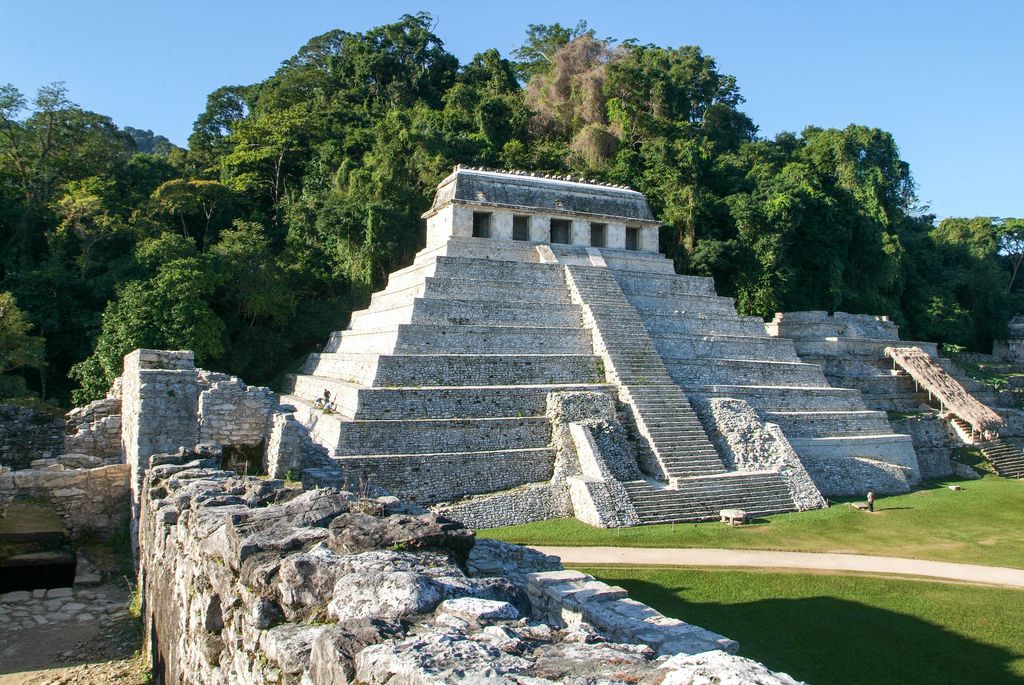
These ruins are by far one of the most memorable you can visit, given they look more or less exactly how they did all those years ago, along with the shrieking sounds of animals all around.
This area of the jungle is also perfect for exploring nature, and there are many early morning jungle tours where you can spot many stunning and rare animals. howler monkeys and spider monkeys are some of the most common, however, you can see many toucans flying around and even a jaguar or ocelot if you’re really lucky.
Usually, Palenque is a major stop of its own and is better this way for those who are independent and have more time (public buses between the two can take as long as 9 hours one-way).
However, those who are short on time can join this day trip, where you’ll visit the ruins as well as other gems such as Ocosingo and Agua Azul Waterfalls along the way.
Agua Azul Waterfalls
As previously mentioned, the Lacandon Jungle is full of incredible nature, great hiking experiences, and mysterious tribes.
There are also many stunning waterfalls you can visit too, such as those of Agua Azul. Hidden within the jungle, this series of bright-blue cascades really does have to be seen to be believed.
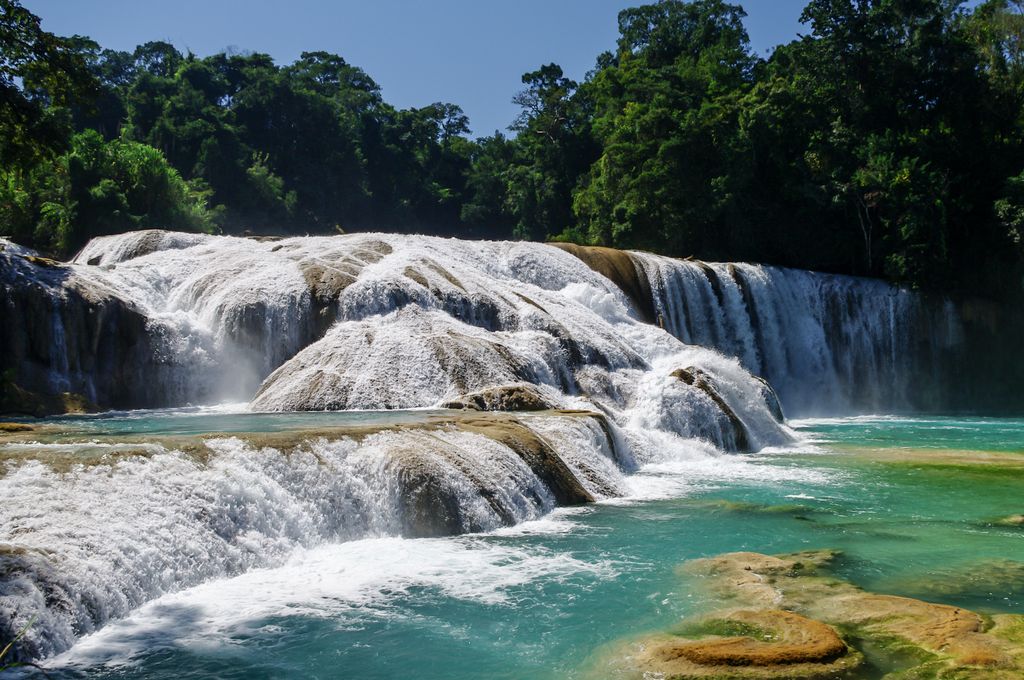
While travel photos can sometimes be deceiving with post-shot edits, these waterfalls really are this mesmerizing color, which is due to an abundance of rich minerals found in the river.
Many of these azure pools are suitable for swimming, which is a perfect way to cool off from the hot Mexican sun above.
I highly recommend bringing lots of water and reapplying sunscreen several times during your visit, given this area will be much hotter than San Cristóbal.
The distance between San Cristóbal and Agua Azul is just over 150 km, which takes around 3 hours to drive to.
However if you do opt for public transport to get here, it can take almost half a day given unreliable schedules and multiple bus stops.
The better way to do it is to head with this day tour from San Cristóbal, which includes transport in an air-conditioned minivan as well as having all entrance fees included.
You’ll also visit Palenque and the waterfalls of Misol-Ha as an added bonus!
Sumidero Canyon
By far one of the most stunning natural sceneries you can see in all of Southern Mexico, Sumidero Canyon has giant cliffs that tower above the river and surrounding jungle below.
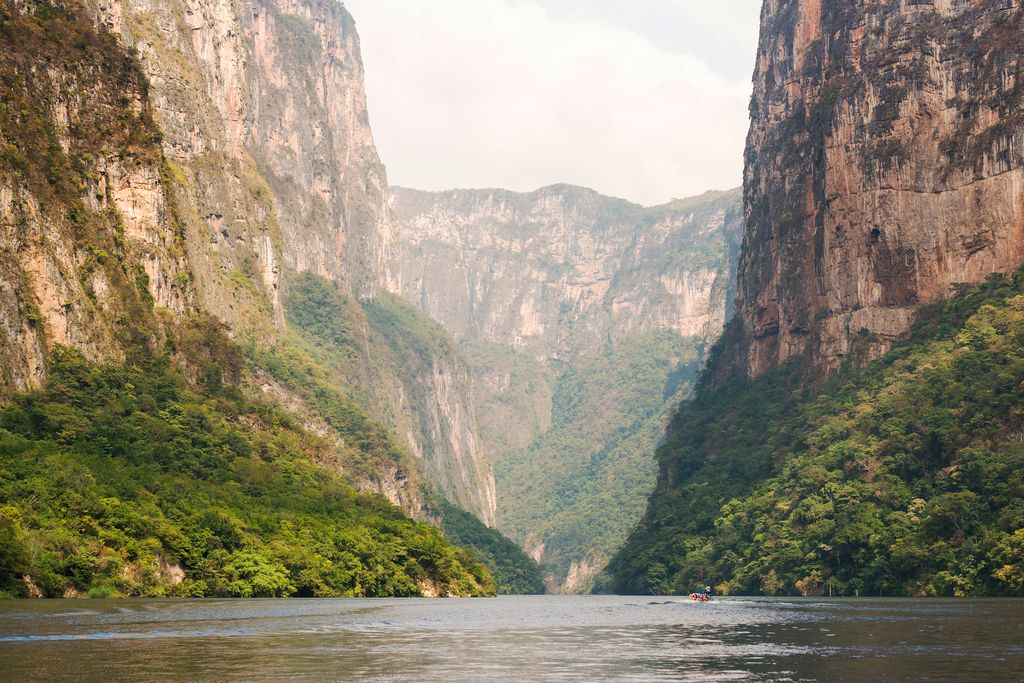
What’s even more impressive is that the cliff faces are near vertical and measure over 1000 ft in height, making for a pretty unique panoramic view from the river.
The area is also home to lots of wildlife, and when heading along the river you can spot everything from Caiman and Spider Monkeys to various tropical birds flying overhead.
Sumidero Canyon is just a 1-hour ride from San Cristóbal, making it an easy day trip to do from town (and also ideal for those who are short on time or want a rest from the longer bus rides).
While you could head here on public transport independently, I instead highly recommend joining this day tour from San Cristóbal.
Not only will you have hotel pick-up and drop-off from your accommodation, but you’ll also have the boat ride included. Even better is that you’ll have a knowledgeable local guide on hand who can teach you some really interesting things along the way.
Where Next? Exploring the Rest of Chiapas
San Cristóbal is a great jumping-off point into Chiapas state. Here are some suggestions for where to head next.
Palenque
One of the most popular destinations to head to next is Palenque. This large town is located within the jungle and is just a 6-hour bus ride from San Cristóbal. Being at a lower elevation, the climate here is much hotter here, so you’ll no longer need to bring that extra jumper in the evening!
Palenque is split into two areas; the town center and the archeological zone. I highly recommend all travelers to stay within the archaeological zone if possible, as it’s situated within the remote jungle and away from the noise and bustle.
You’ll also have tons of nature right on your doorstep, with the infamous night-time shrieks of the resident howler monkeys a memorable experience to say the least!
You can also head on an early morning walk through the jungle, where you’ll see many wildlife including snakes, monkeys, and even a jaguar if you’re lucky.
While there are different departure times, it’s really worth getting up and out extra early (around 4:00 a.m.), as the jungle will be at its most active.
The area is also home to Palenque Ruins, which is an ancient site that was built around 600 A.D. and was once home to the Maya civilization. Just remember to use lots of mosquito repellent, and also to bring lots of water given how hot and humid it can get.
Tuxtla
If you’ve already passed through Palenque on your way to San Cristóbal, then you can head further west to the city of Tuxtla Gutiérrez. It’s definitely the least popular of the three, however, it has some cool gems and is worth spending a couple of days in before heading over to Oaxaca.
Some of the best things to do in Tuxtla include visiting a range of interesting museums, such as Museo del Café and the Museo de la Marimba.
There are also many interesting architectural builds here that are great for photos, including the Chiapa de Corzo temple as well as the Catedral Metropolitana de San Marcos.
Both Palenque and Tuxtla Gutiérrez can easily be reached by bus (under 6 hours for either from San Cristóbal). The main bus terminal has several companies making the routes daily, although ADO is my recommendation given they are reputable and have spacious seats.
Some links may be affiliate links, meaning I may earn commission from products or services I recommend. For more, see site policies.
Posted OCT 16, 2023






